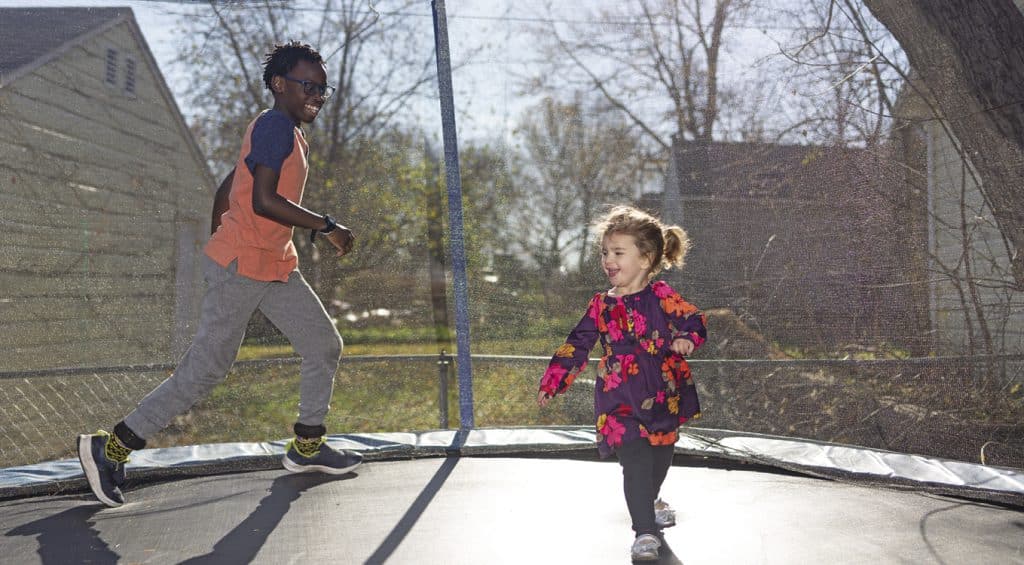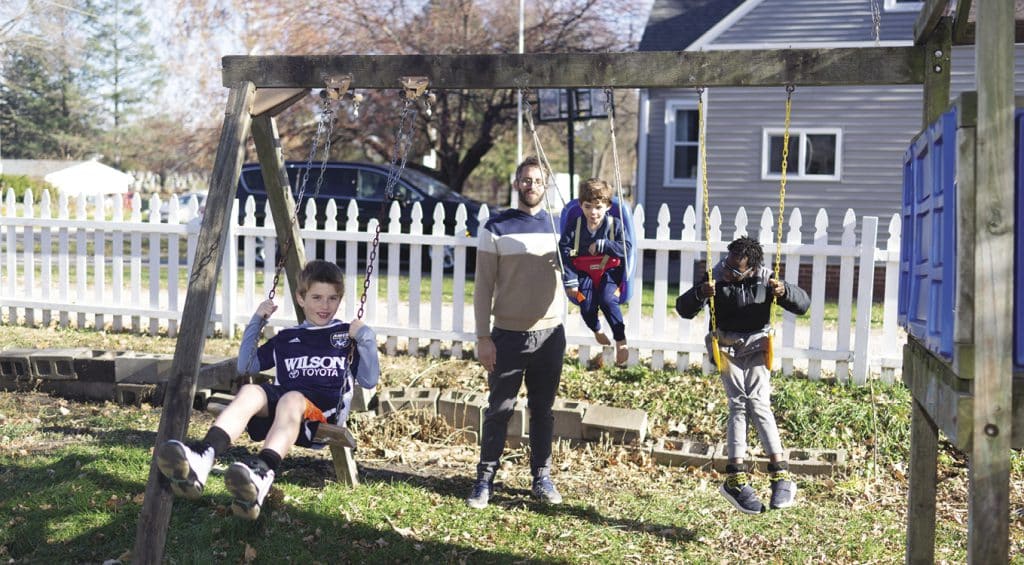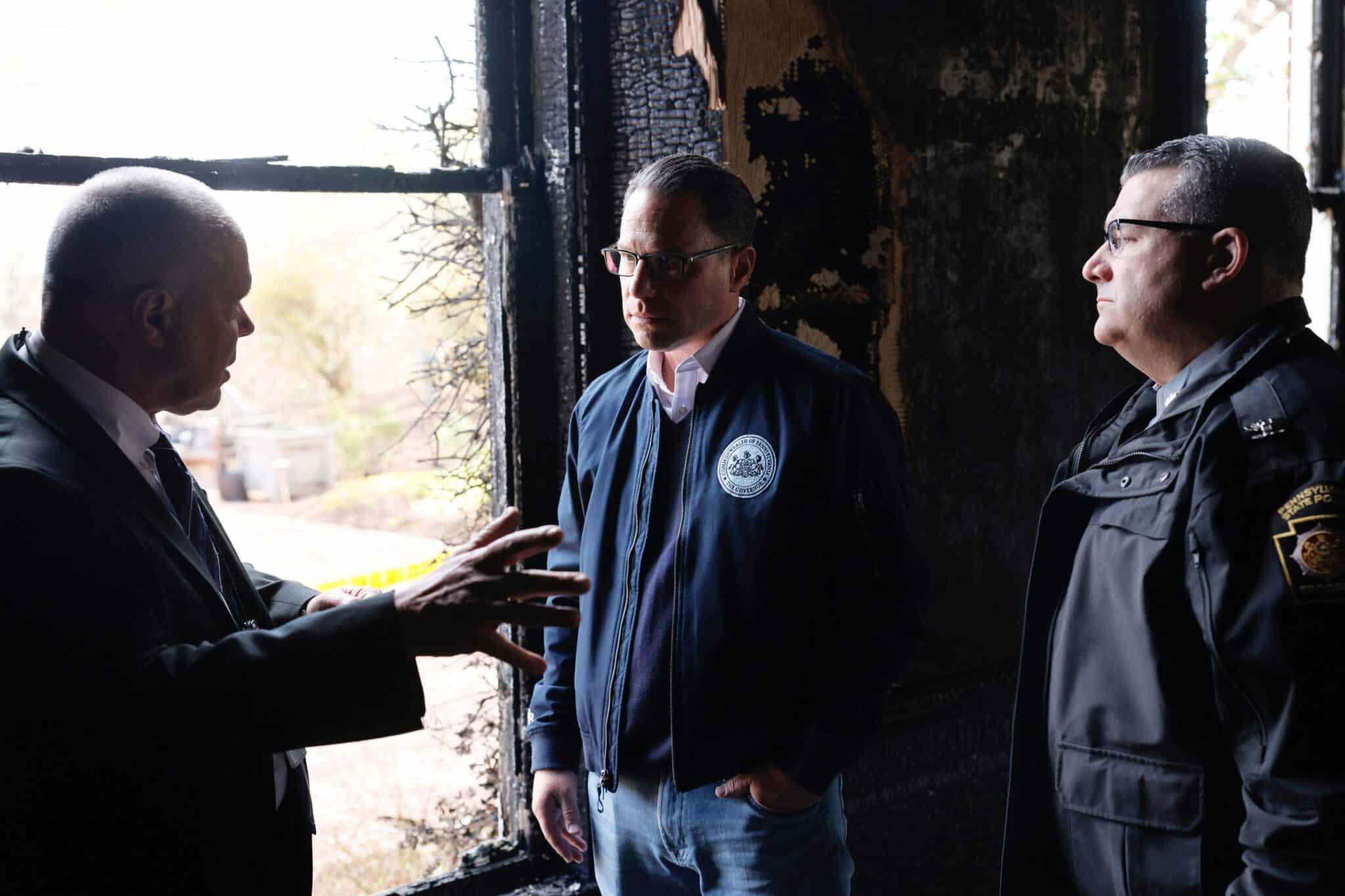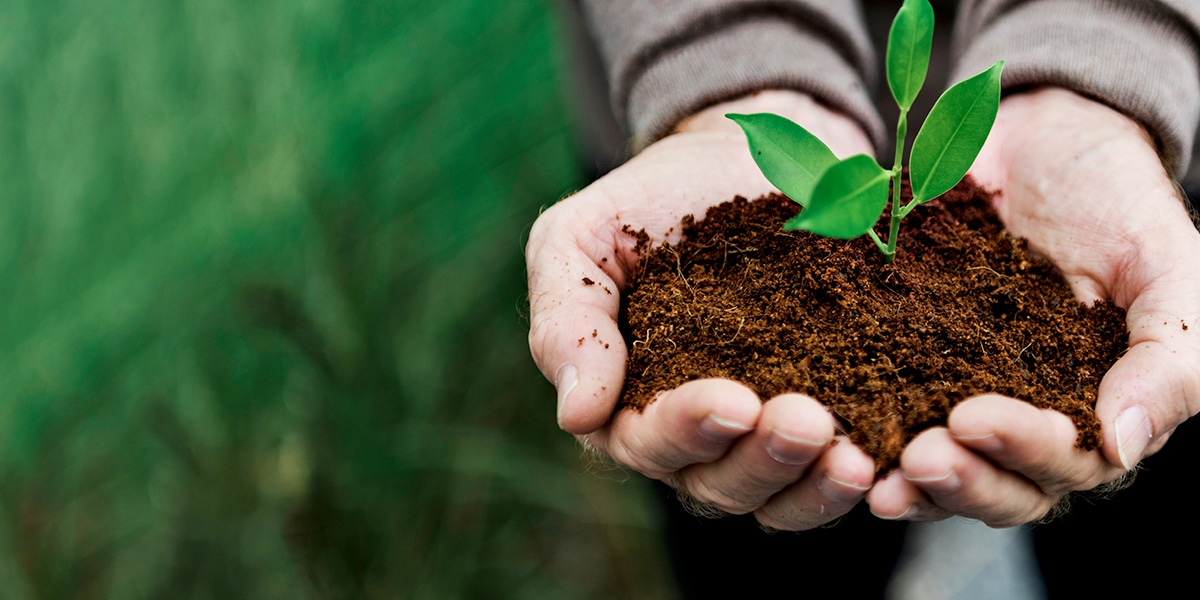Racism will never be eradicated. But guiding future generations to face it with courage and steadfastness will make the world a more just and loving place.
Every weekday morning, I zip around town in my minivan to drop my kids off at their respective destinations: The littlest three go to their grandparents’ house for a few hours, while the oldest two shuffle through the halls of our local elementary school. Five children whom I would do absolutely anything to help and protect. Five children who are my heart walking outside my body. Five children: four White, one Black.
My mother and father grew up in the Deep South during the civil rights era and were determined to educate their children about racism when they became parents. From early on, they talked quite openly about the evils of racism with my sister, brother, and me. I will always be thankful that they did not shy away from such a painful topic, but rather taught us in no uncertain terms that all people were created equal. That early exposure to rejecting toxic ideologies enabled me to receive much from the Black community throughout my life: friendships, teachers, music, and, eventually, my first child.
A Massive Reality Check
While preparing for the adoption of our son, my husband and I were instructed by professionals on the importance of diversity and inclusion. When social workers and veteran adoptive parents explained to us that our child needed to see himself represented in the predominately White world we were inserting him into, I bent over backward trying to undo the whitewashing that I suddenly realized marked our lives.
It was a massive reality check. Almost overnight, I could see how nearly everything around us was created for and marketed to White people. From the board books on store shelves, to the characters in television shows, to the people we spent the most time with, everything communicated to my dark-skinned child that he was the odd man out, the exception: not normal. We realized what Black families had long known: If we wanted our Black son to see himself positively and equally represented, we would have to be very intentional about every single lifestyle and media choice we’d make.
From that point on, my husband and I vowed to work conscientiously to help our son construct a positive racial identity—no small undertaking for a Black boy in this country. Then in 2012, when my son was 2, 17-year-old Trayvon Martin was murdered by a neighborhood watch volunteer for wearing a hoodie and looking “suspicious.” And my whole world changed.

Image: Zachary Reinhart, PhD
An Education
It was not that this was the first time an unarmed Black child had been fatally shot by a police officer or someone in a similar position of authority. And yet with the dawn of social media, the news was finally reaching middle-class White women like me. But what rocked my world was not the fact that this single event happened, but rather witnessing half the country rise to the defense of the murderer instead of the victim. I listened as the character of the teenager was dragged through the mud as though made to be something subhuman and unworthy of our sympathy.
It wasn’t his death that broke me; it was White America’s justification of it. In Trayvon, I saw my own son, and for the first time, I was scared for him to grow up. The first time—but not the last.
Less than two years later, it was the death of 12-year-old Tamir Rice in the headlines. Two years after that, it was 18-year-old Michael Brown. I saw my son’s face in each of theirs. I peered into a terrifying future that Black parents all around me had shouldered for generations without my understanding. And we all know the story didn’t end there: Black boys and young men and women continue to suffer from police brutality at disproportionately high rates per population percentage.
For me, the revelation was too long in coming, but I am grateful it came. Through seeking to be educated on the issue, I came to learn that racism is mostly not a personal problem, but rather a deeply systemic one. There are few people in the world who would admit to being racist, and yet we see racial bias and prejudice play out in ways small and large every day. I came to see that it was no longer enough for me to personally be against racism; rather, it was my responsibility to confront the poisonous bedrock of our society—bedrock that was laid on the backs of enslaved people—and the generations of injustice that have ensued.
As a White mother to both Black and White children, I’ve learned that it’s not enough to “not be racist,” but that what is necessary is to insist on becoming aggressively anti-racist. The future safety of my son may depend on the willingness of people like me to uproot racism from our unconscious thought patterns and demand change from the systems that were built around the disenfranchisement of communities of color: our educational, criminal justice, and political systems, to name a few.
Preparing for an Unbalanced World
My unique task in raising a Black son is first and foremost to help him cultivate racial identity and pride. He deserves to feel proud of the resilient, intelligent, creative, powerful community he belongs to, and it is my joy to assist him. But much more difficult is the task of providing him with information about racism, the still-unfolding history of our country’s horrific treatment of Black people, and the reality of police brutality, all without inciting either fear or shame. It has been a difficult path to navigate, to put it mildly.
Our family is lucky to live in a small university town with low crime, a wholesome atmosphere, and a police department that has a good track record of serving the community with level-headed empathy and peace. While we talk honestly about racism in our family, I hadn’t felt the need to discuss police brutality with my son until the death of George Floyd in 2020 and the national riots that followed, which he and his brother heard about from a young neighbor.
It is much easier to talk to my White son about deadly racism than it is my Black son. I feel grieved explaining to my White child that racism exists, but at least I can present it as something he can take action against. I have the comfort of knowing that the conversation won’t make him personally feel less safe.
But talking about these things with my Black son is incredibly painful, yet I know he can’t afford to be unprepared as he enters his teen years. Like so many Black parents, I will soon have to give my son careful instructions on how to interact with the police or other potentially violent figures—instructions far more meticulous than I will have to give his White brothers, instructions that he and I will both know cannot guarantee his safety. (Just look at the case of Elijah McClain in 2019.)
The reality of facing these conversations with my beautiful, gentle, kind Black boy brings home the importance of opening up dialogue with my White children; and I hope, too, that it serves to remind my White friends to do the same with theirs. If Black children must hear about the dangers that exist because of the color of their skin, then White children are able to hear about it as well. And the only way to dismantle systemic racism is for White people to do the work. The onus of responsibility is not on the Black community. It’s on people like me.

Image: Zachary Reinhart, PhD
The Hard Work of Anti-Racism
As a mother of five kids between the ages of 2 and 12, I’m asking myself the same questions that most White parents are asking these days: At what age should serious conversations about racism begin? How much do I disclose to my children at each developmental stage? By disclosing these systemic problems, will I make them ashamed of themselves for being White? How can I present it in a way that is realistic but not devoid of hope?
Few people are experts in this field, and I am not one of them. But I have sought out enough education to know that avoiding these questions does not serve anyone: not my White children, not my society, and more than anything, not my Black child.
Yes, I “see color.” I must. When White people say we are “colorblind,” we are failing to acknowledge the deep generational trauma and pain that has shaped the Black community and that continues to affect their lives. Being colorblind is simply not an option when the very economy we live in was established by the unpaid labor of Black people; it’s not an option when our policing system began as a slave patrol and then violently upheld segregation and unequal rights; it’s not an option when Martin Luther King Jr. could still be living today. The Black community continues to be painfully affected by a history that is far from ancient, so White people like me don’t get to pretend that the past doesn’t affect the present.
So what can White parents or grandparents do? First, we can acknowledge that anti-racism work is a lifelong journey for us as well as our children—a journey that requires ongoing education and a posture of humility. Simply declaring we aren’t racist is not enough; racism is so interwoven into the fabric of our country’s foundation that we must actively work to extract ourselves from it, or it won’t happen. Thankfully, there is now no shortage of books, podcasts, and documentaries to aid us on our journey. We no longer have the excuse of not knowing where to start. These days, anti-racism resources are everywhere.
Second, we can have hard conversations about race with our White children, knowing that our Black neighbors are having much harder ones with theirs. It’s important to note that this will not be a onetime conversation, but rather a topic that is explicitly integrated into the family’s values at every developmental stage from toddlerhood to teen years. They need us to walk alongside them, communicate clearly, speak honestly, and be a safe space for their questions and confusion as they learn and grow.
Like most other parents who love their children fiercely, I balk at the idea of introducing tragic concepts to the hearts and minds of all my kids. But when I look at one black and four white faces, I know in the depths of my being that God created each and every one of them to make the world a more equitable, kind, and just place for all people. How can they fulfill this calling if I don’t equip them with the facts, language, reasoning, and empathy necessary to do so? Our children need us to help them become the people we imagine when we dream of their future.
Representation Matters
Take inventory of your children’s world. Are they seeing only white skin tones represented in the people, art, and characters around them? Consider whether they could be seeing greater Black representation in the following areas:
+ friends—both children and adults—with whom you spend time as a family
+ professionals in their life (teachers, dentists, doctors, pastors, etc.)
+ art on the walls of your home and magazines that come in the mail
+ television shows (e.g., PBS Kids Talk About: Race & Racism), movies, and picture books (e.g., The Colors of Us, by Karen Katz)
+ dolls, toys, and action figures
Dos and Don’ts for Navigating Awkward Conversations about Race with Kids
DO normalize different skin colors and ethnicities (i.e., “Yes, I see that her skin is black. Yours is white, isn’t it? God made people in several different colors!”).
DO create a safe space for kids to ask questions. Children are naturally curious and asking questions does not make them prejudiced; they are simply trying to understand the world.
DO intervene in play when necessary. If you overhear or observe problematic things between children of any age while they play, stop and explain why it was wrong.
DON’T hush a child who is asking questions about race. Silencing the conversation sends a message that race is a taboo subject to be avoided, when in reality it is something to acknowledge, celebrate, and seek to understand.
DON’T make excuses for or ignore the racist behavior of others (i.e., “I know you heard what Uncle John said at dinner about Black people. I want you to know that I have told him that was unacceptable to us and that our family will not return to his house if he ever says that again.”).








